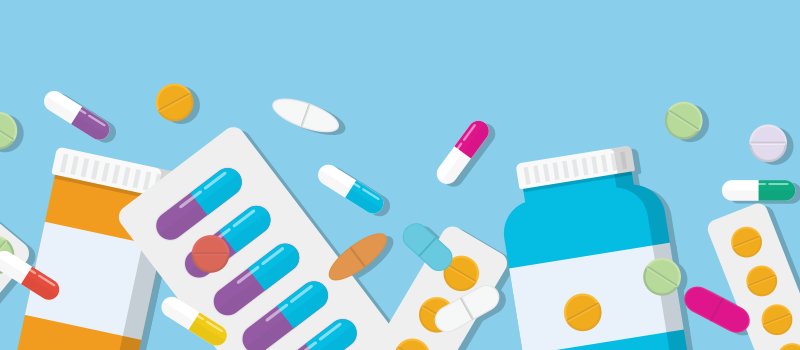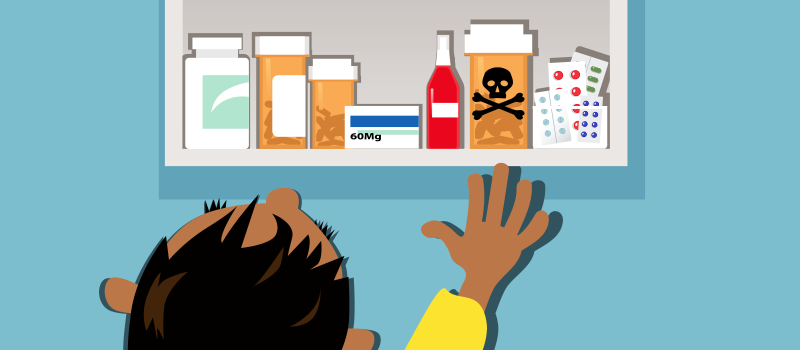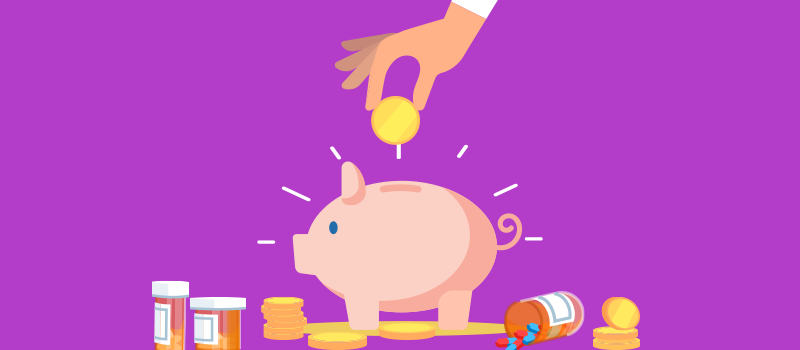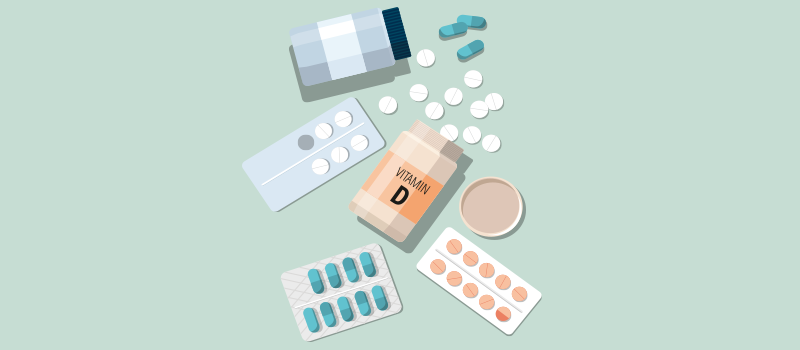What’s the Buzz
The Bee Healthy Blog
Keflex: Side Effects, Dosage, and More

Keflex is a brand name product for a common antibiotic called cephalexin. Please continue reading to learn more about this medication.
Is Keflex a powerful antibiotic?
Yes, Keflex is a powerful antibiotic. It is a broad-spectrum cephalosporin antibiotic that is effective against a wide range of bacteria.
Specifically, Keflex is one of the first-generation cephalosporins which have good coverage against gram-positive bacteria.
Why is this medication prescribed?
Cephalexin is prescribed to treat bacterial infections caused by susceptible strains of bacteria that can affect the respiratory tract, such as pneumonia as well as bacterial infections of the ears, skin, bone, and genitourinary system.
What is the dosage form and dosage regimen?
Cephalexin is available as a tablet, capsule, and oral suspension. You need to take this medicine 2-4 times a day.
Your healthcare professional may prescribe a cephalexin dose ranging anywhere from 1 to 4 grams daily in divided doses depending on the severity of your infection. The usual adult dosage for those between 18 and 64 years is 250 mg every 6 hours. Alternately, 500 mg every 12 hours is another option. This dosing regimen can also be used in children between 15 and 17 years old.
The dose in pediatric patients depends on the child’s body weight, ranging from 25 mg to 50 mg per kilogram per day in divided doses.
Your doctor makes the decision on Keflex dosing based on your age, the type of infection, your tolerability of the side effect, and your medical history. A higher dose is appropriate for more severe infections.
For example, streptococcal pharyngitis (strep throat) and urinary tract infections (UTIs) can both be treated with Keflex (cephalexin) 250 mg every 6 hours or 500 mg every 12 hours. However, the dose can be increased if these infections are deemed to be more severe. Using the same examples of strep throat and UTIs, your doctor can decide to increase the dose up to 4 grams divided into 2 or 4 equal doses. You will need to continue taking cephalexin for the entire course of treatment which can be from 7 to 14 days.
Read your doctor’s prescription carefully and take cephalexin exactly as prescribed at the recommended dosages. Ask your doctor or pharmacist if you don’t understand the dosage information.
Complete the full course of treatment even if you start to feel better. Stopping cephalexin too soon can lead to incomplete treatment of your infection, causing it to come back and become harder to treat. This is a public health problem known as antimicrobial resistance.
Do not continue taking cephalexin beyond the prescribed duration unless your doctor tells you to. If you continue to have symptoms after finishing cephalexin, call your doctor.
What is the most common side effect of Keflex?
The most common side effect of Keflex is gastrointestinal (GI) distress with symptoms such as nausea, vomiting, diarrhea, stomach pain, stomach cramps, and heartburn. You don’t have to take Keflex with food, but if you experience these GI side effects, taking the medication with food might help.
Other side effects of cephalexin include headache, dizziness, tiredness, rectal or genital itching, joint pain, agitation, and confusion. Tell your doctor if the side effects are severe, getting worse, or still present after a few days.
What are the other side effects of Keflex?
Some of the side effects of cephalexin are more serious. Call your doctor immediately or seek emergency medical attention if you develop the following signs and symptoms:
- Signs of an allergic reaction with skin rash, hives (red spots), itching, swelling of the face, eyes, lips, tongue, and throat, trouble breathing or swallowing
- Severe skin reaction with skin pain, sore throat, fever, a red or purple skin rash that becomes peeling and blistering
- Labored breathing or wheezing
- Bloody, watery, or foul-smelling diarrhea, stomach cramps, and fever up to two months after antibiotic treatment (these can be signs of a serious condition called C. difficile diarrhea)
- Recurrent signs of infection such as fever, chills, and sore throat
- Hallucinations (seeing or hearing things that are not there)
What are the risks of taking Keflex?
Some of the risks of taking Keflex are:
- Rarely can cephalexin cause life-threatening adverse reactions such as anaphylaxis (throat closing).
- Antibiotic treatment can cause C. difficile diarrhea (a severe form of infectious diarrhea that requires emergency medical treatment).
- Taking cephalexin can increase the risk of seizures, especially in people with reduced kidney function.
What precautions should I take while on Keflex?
Allergic reactions
Tell your doctor if you have ever had allergies to cephalexin, other antibiotics, or any other medications. Seek immediate medical care if you develop signs and symptoms of an allergic reaction, such as skin rash, hives, itching, or swelling of the face, lips, or throat.
Medical history
Cephalexin may not be right for everyone. Tell your doctor if you have a history of allergies, gastrointestinal conditions, liver disease, or kidney disease.
Drug interactions
Interactions between cephalexin and your other medicines can lead to severe adverse reactions and other effects. For example, cephalexin can interact with blood thinners, diabetes medications, and gout medicines. Give your doctor and pharmacist a complete list of your medications, including prescription drugs, over-the-counter medicines, nutritional supplements, and herbal products, to lower the risk of drug interactions.
Missed dose
If you miss a dose of cephalexin, take it as soon as you remember. However, if it is almost time for your next dose, skip the missed dose and go back to your regular dosing schedule. Do not take a double dose to make up for a missed dose.
Storage
Store cephalexin tablets and capsules at room temperature. Once the oral powder is reconstituted to oral suspension, you should keep the bottle of liquid medicine in the refrigerator and discard any unused medicine after 14 days. Do not store medicines in your bathroom cabinet where they can be exposed to heat and moisture. Keep all medications safely out of reach of children and pets.
Followup
Keep all your follow-up appointments with your healthcare provider. They may want to order certain lab tests to see if your infection has cleared.
Pregnancy and lactation
Before starting cephalexin, tell your doctor if you are pregnant or breast feeding. Call your doctor if you become pregnant while on this medicine.
What should I avoid while taking Keflex?
- Do not crush or chew the tablet or capsule. If you have trouble swallowing pills, tell your doctor, and they can prescribe liquid medicine.
- Do not use a regular kitchen spoon to measure the dose of the oral suspension of cephalexin. For accurate dosing, use the dosing cup or syringe provided. Shake the bottle well before use.
References:
- https://medlineplus.gov/druginfo/meds/a682733.html
- https://dailymed.nlm.nih.gov/dailymed/drugInfo.cfm?setid=68fba58a-7748-4581-8432-f5286c46d90a
- https://www.accessdata.fda.gov/drugsatfda_docs/label/2006/050405s097lbl.pdf
- https://www.mayoclinic.org/drugs-supplements/cephalexin-oral-route/side-effects/drg-20073325?p=1












SOCIAL